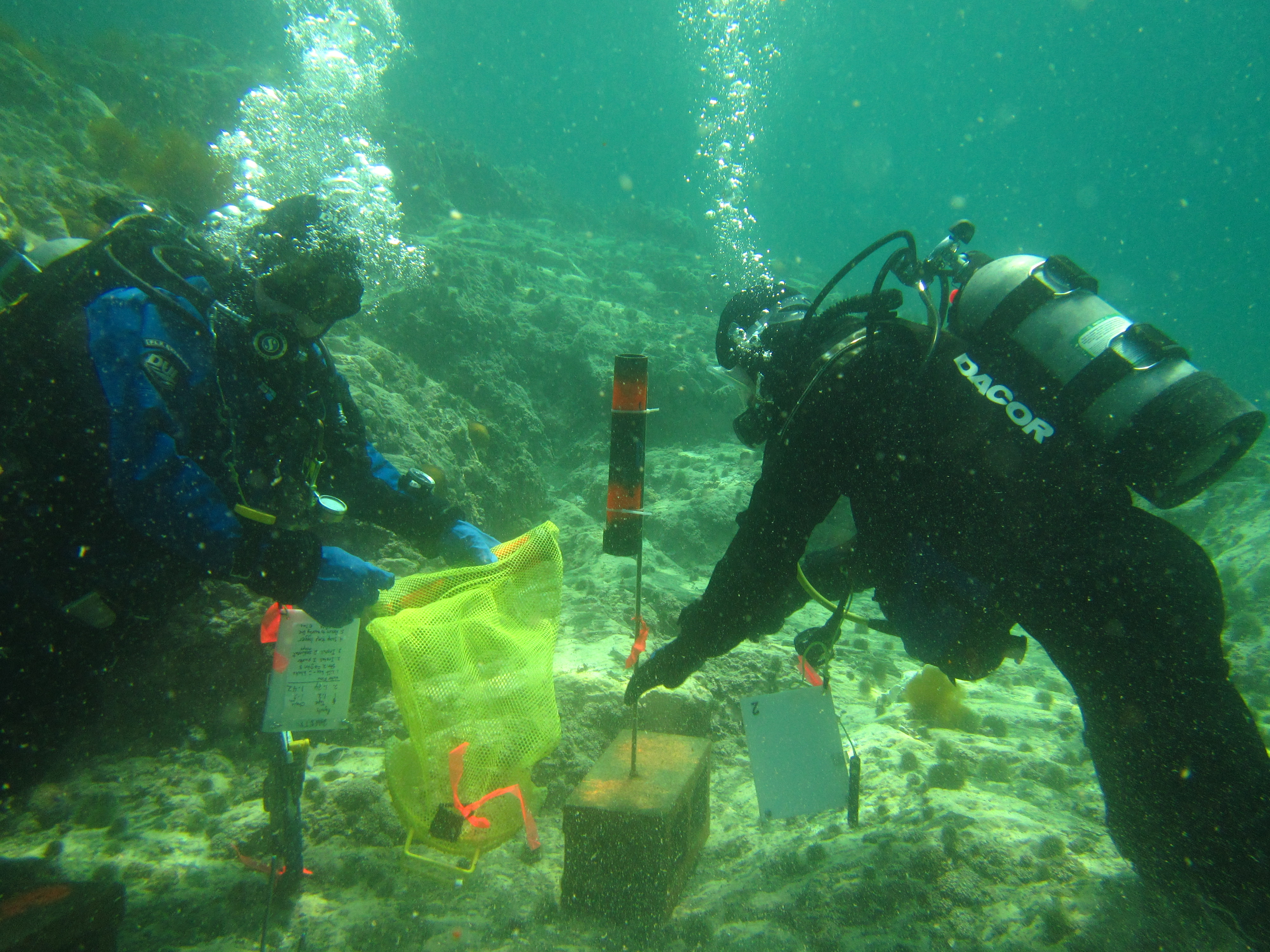Scientific diving course puts marine life at students' fingertips
For two weeks in June a group of undergraduate and graduate students braved the 3 C waters of the Atlantic Ocean as part of a new course.
The students came from four academic disciplines ― biology, archaeology, psychology and geography – and were participating in the first offering of OCSC-4000 Scientific Diving Methods. The course, taught by Dr. Patrick Gagnon, associate professor with the Department of Ocean Sciences, took place in and around the St. John’s area.
He says the idea behind the course was to take students who were already certified recreational divers and show them how to do science underwater using scuba techniques.
The course taught students to safely apply knowledge about equipment and methods used for data collection in underwater scientific research as well as the skills to plan and execute surveys and experiments with marine organisms in major subtidal habitats.
“We also developed their leadership skills, because when you are diving for science it rarely goes exactly as you would like it to go,” said Dr. Gagnon. “You have to be able to make quick judgment calls and communicate those efficiently to your diving partner.”
Students practised such underwater tasks as mapping habitats, deploying various oceanographic instruments, laying transects and quadrats, drilling holes to anchor structures and mark bottom features, as well as using lift bags to transport scientific equipment and collection bags. Another important aspect was to help the students develop effective data writing and management systems for different types of habitats and underwater conditions.
“It’s challenging because they’re floating in that medium and fighting against gravity,” he said. “Sometimes it’s a bit wavy and they’re being pushed around as they are trying to measure some small organisms. It’s frustrating in the beginning, but they quickly got the hang of it.”
A key priority for the first offering of the course was to ensure that it was, above all, conducted safely. Before the students entered the water, they participated in a very thorough set of examinations to pre-check their diving skills. During the course, they were taught how to do things underwater in a safe manner – safe for themselves, for their diving partner and for the environment.
“We wanted to show them how to respect the environment and make sure the way they sample is as least invasive as possible,” said Dr. Gagnon. “The course is great because it gives participants extra training that most other divers don't have. It gives students a great background and a unique set of skills, which makes them even more competitive when they apply for jobs in academia, government or the private sector.”
In addition to credits, the course comes with certification from the Canadian Association for Underwater Science (CAUS). The certification allows participants in the program to conduct research at any other university in the country that abides by that program.
Dr. Gagnon adds that the course fits perfectly with the new curriculum being developed by the relatively young academic department. It also makes it one of a very few number of universities in the country offering this type of program.
“It’s certainly coming at the right time,” he said. “This winter Memorial will be hosting the annual CAUS meeting and we will be able to tell other universities about our model. We’re also hoping that with more awareness, the program will be able to grow.
“But most of all, it’s great because it puts students directly in contact with actual flora and fauna, because they’re doing it all with their own hands.”
